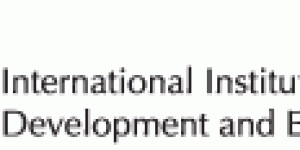IIDE Proceedings 2014 – Information – The ‘I’ In 21st Century Organizational IT Systems: An Informed Systems Methodology
No comments yetIn development for over a decade in three North American academic libraries, the Informed Systems Methodology offers transferable organizational development for fostering workplace learning empowered by catalytic relationships among information, technology, and people. With an explicit emphasis on using information to learn, ‘soft’ systems design tools aid co-creation of communication systems and professional practices that enable information sharing and knowledge creation processes. When contextualized by local values, experiences, and purposes, the ISM fosters organizational transformation and creative innovation.
1. Introduction
The development of information technology during the last decade or so has produced vast consequences and opportunities for many professionals. As an example in the academic environment, teachers in educational settings have had to adopt various Learning Management Systems and related pedagogy, and also to offer web based courses and programs. This radical departure in higher education from campus based teaching and face-to-face interaction with students necessarily requires significant re-thinking about how students learn within a virtual environment, and how teachers interact to engage students in learning experiences.
A second related example, which has been in our research focus for more than 10 years, concerns libraries and librarians’ changing professional roles. This context has driven our slong-term research efforts towards developing a methodology for designing and implementing new workplace processes, organizational structures, co-design tools, and conversation patterns by engaging library practitioners (Mirijamdotter & Somerville, 2008; Somerville & Mirijamdotter, 2014).
Before the development of web based technology, libraries and librarians were viewed as gatekeepers to information. Traditionally, library professionals described information objects through cataloguing metadata for indexing inventory, and manipulated information-finding tools through reference, research, and instruction services (Somerville et al, 2006). This mediation role originated as ‘reader services’ in the days of inadequate indexes (or no indexes) to published scholarly content. Then, in the early stages of computer-generated indexing, librarians were necessarily ‘intermediaries’ between the inhospitable ‘native interfaces’ to electronic databases of publisher(s) aggregated content. However, all this changed as searching algorithms for ‘born digital’ content permitted ‘disintermediated’ Google-like searching, without need of a librarian coach (Somerville et al, 2012). More recently, new researcher productivity tools (Somerville & Conrad, 2014a; 2014b) accentuate the possibilities for independent research unaided by library science expertise. At the same time, librarians are experiencing decreasing gate counts and diminishing consultation transactions, despite increased student enrolment (Mirijamdotter & Somerville, 2009). Even as libraries and librarians became increasingly marginalized in the academic environment, advanced information and communication technologies (ICT) and plentiful digital information resources encouraged heightened expectations from academic library users. These developments necessitated re-thinking within academic libraries about professional purposes, conventional processes, and traditional relationships.
Our research focuses on information and its connection to learning and is based on the assumption that changes in organizational patterns of behaviour need to build on inclusive workplace learning processes. For facilitating these processes, we both adopt and adapt Peter Checkland’s Soft Systems Methodology (e.g., Checkland, 1981; 2000; 2011; Checkland & Holwell, 1998a; Checkland & Poulter, 2006), that focuses on collaborative design of communication, decision-making and planning systems, which are necessary for purposeful workplace activities that support change in understanding (i.e., learning) and, thereby, change in behaviour. Complementary theories, such as Christine Bruce’s Informed Learning theory (e.g., Bruce, 2008; Bruce & Hughes, 2010; Bruce et al, 2012), emphasize experiences of using information to learn. Dialogue and reflection processes further activate information experiences through information transfer and knowledge creation. Together, these guiding philosophies, design tools, and theoretical insights enable and enliven re-thinking workplace systems and associated professional practices. Thus, the research efforts include challenging underlying assumptions that historically guided the library workplace and build on inclusive workplace learning processes by means of participatory action research. Such a unified approach that emphasizes information and its connection to learning, including initiating inquiring workplace culture encouraged by collaborative professional practices, was found to be absent in existing theories of organizational learning (Crossan et al, 2011; Somerville et al, 2014).
Information nowadays includes both electronic and physical forms, known as e- or p-resources. Therefore, organizational structure and workplace processes must ensure management of needed information, regardless of authoritative source, resource format, or delivery channel. This requirement is particularly relevant to libraries, which must select, organize, and manage information. To know what information to collect and then how to make it discoverable and accessible requires understanding how the library’s role furthers the current mission and vision of the educational institution and, relatedly, the changing expectations and needs of campus constituencies. Findings in each academic library that we have studied showed that this was not initially the case. Therefore, we have explored participatory approaches in our research that build a holistic perspective to raise awareness of individual, group, and organizational contributions to the mission and purpose of the overall organization through conscious use of information to enable changes in organizational behaviour. Toward these ends, this paper presents essential elements of the Informed Systems Methodology (ISM) and infrastructure requirements for activating and sustaining informed learning and systems thinking in contemporary organizations, as represented in the ISM. The paper ends with some concluding remarks about the methodology’s transferability, and further challenges to address.
2. Theoretical foundations
The Informed Systems Methodology (ISM) is the result of a decade of design and implementation activities related to library services, organizational systems, and library facilities (e.g., Somerville & Howard, 2008; Somerville, 2009; Mirijamdotter & Somerville, 2009; Somerville & Howard, 2010; Somerville & Farner, 2012; Somerville, 2013; Howard & Somerville, 2014; Somerville, 2014). The theoretical foundations are based on Systems Thinking and Information Management as represented particularly by Soft Systems Methodology (e.g., Checkland, 1981; 2000; 2011; Checkland & Holwell, 1998a; Checkland & Poulter, 2006) and Informed Learning Theory (e.g., Bruce, 2008; Bruce & Hughes, 2010; Bruce et al, 2012) respectively.
Systems thinking recognizes that each individual and organizational unit is a part of a whole. Systems thinking acknowledge that any organization is also part of a larger enterprise, in other words, “an autonomous whole while at the same time being a functioning part in a larger whole” (Checkland, 2011, p. 490). Each part therefore needs to reflect the mission of the overall system and identify its contribution to the whole. Additionally, each part is related to other parts within the whole by information and communication flows and thus affects and is affected by information, whether deliberate or unintended.
Information Management (IM) entails organization and coordination of the structure, processing and delivery of information. The aim is to “provide data and information to users with the appropriate levels of accuracy, timeliness, reliability, security, confidentiality, connectivity, and access and … tailor these in response to changing business needs and directions” (Mithas et al, 2011: 238). The area itself can be traced back a century and has gone through several stages, where organization and control were considered central regardless of whether information was on paper or online, records management through use of computers and other related technologies, or so called management information systems (MIS) elaborated for the purpose of supporting decision-making and prognostics (Dias, 2001). In the 1970s, strategies for managing all necessary information in an enterprise evolved and a new concept – knowledge management – appeared (Dias, 2001).
In more recent research, IM is associated with diverse applications, such as big data, data warehouse, and business intelligence (McKnight, 2014). It is also referred to in relation to a variety of purposes, such as development of multi-agent e-Government services (Teo & Koh, 2010) and internationalization of small and medium sized enterprises, so called SMEs (Dutot et al, 2014), in reviews on literature on Personal Information Management (Wiggins, 2014), and in bibliometric analysis and software tools (Gomez-Jauregui et al, 2014). IM also includes models of information flows (Durugbo et al, 2013), information technology capabilities and companies’ information requirements (Dutot et al, 2014), and information systems management – “managerial and technical strategies and competencies that significantly improve or add value to the use of information systems within an organisation” (Booth & Philip, 2005: 287).
The commonality among all these approaches is related to managing information for the purpose of developing or operating the business more efficiently, and the focus is on digital technology and information systems. However, as stated on the International Journal of Information Management homepage, “The challenge for Information management is now less about managing activities that collect, store and disseminate information. Rather, there is greater focus on managing activities that make changes in patterns of behaviour of customers, people, and organizations, and information that leads to changes in the way people use information to engage in knowledge focussed activities”
(http://www.journals.elsevier.com.proxy.lnu.se/international-journal-of-information-management).
3. Assumptions
The Informed Systems Methodology (ISM) recognizes that all human practices and information experiences are social. They originate from interactions (and ultimately relationships) among community members and within communities-of-practice (Wenger, 2000), including formal and informal learning communities. Our approach reflects a holistic systems perspective, which acknowledges that any organization is part of a larger enterprise. However, while fulfilling a function in relation to the larger whole, the part in itself is an autonomous whole, which, in turn, includes parts that have a relation to each other. Thus, there is an interconnection between organizational parts and members.
ISM also assumes that:
“people can learn to create knowledge on the basis of their concrete experiences, through observing and reflecting on that experience, by forming abstract concepts and generalizations, and by testing the implications of these concepts in new situations, which lead to new concrete experience that initiates a new cycle. This assertion fortified our aspiration to develop reflective practitioners who learn through critical (and self-critical) collaborative inquiry processes that foster individual self-evaluation, collective problem-formulation, inclusive contextualized inquiry, and professional development” (Somerville & Mirijamdotter, 2014, p. 206).
A workplace organization is therefore operationally defined as a purposeful social interaction system in which collective information experiences and new knowledge develop through workplace socialization processes. From this standpoint, projects aim to establish and embed the sustainable social interactions which, through organizational systems animated by careful attention to information experiences, dialogue and reflection enable investigation and negotiation of the interests, judgements, and decisions by which people learn interdependently.
To animate workplace environments, participants inclusively design (and re-design) enabling information systems in which they advance understanding of topics under discussion as they simultaneously further improvements in organizational systems and information practices. Within this context, culture is understood as a shared basis of appreciation and action, developed through communication and maintained through relationships within an organization.
A final assumption is that the employment of inclusive design and evaluation practices furthers professional information practices and strengthens contextualized information experiences. Informed organizational learning is thereby promoted. Practical learning outcomes include collective alignment and shared understanding of the organization’s purposes and priorities, which guide fiscal and human resource allocations, as well as day-to-day decision-making. In addition, pervasive “systems thinking” incorporates and values people’s information experiences and encourages understanding self and others as part of a larger whole. In combination, these elements inform concerted action to ensure that organizations continue to foster informed learning through evolving organizational structures, services, processes, and roles. We mention these factors as assumptions since we cannot empirically ‘prove’ that these are ‘true’ and because we base the methodological processes on these assumptions.
4. Methodological Principles
Informed Systems Methodology (ISM) is a framework that co-creates organizational learning and agile responsiveness through application of the principles of systems thinking and informed learning. Its focus is on managing activities that make changes in organizational behaviour, building both on information that leads to changes and the way people use that information. This is accomplished by establishing an appreciative setting for the co-design of workplace and inquiry activities. Thus, it incorporates notions of parts existing within a whole and varying information experiences as a vital part of using information to learn.
Situated real world initiatives are conducted according to Soft Systems Methodology (SSM) processes, which necessarily include multiple stakeholders and beneficiaries who share information and professional and positional perspectives during structured inquiries, discussion and debate. Processes involve using information to learn through engaging participants in a variety of information experiences that typically consists of these elements:
* Enter a situation deemed problematical and take part in improving it;
* Find out how the situation is understood and identify multiple world views;
* Make purposeful activity models based on declared pure world views;
* Use models to question the real world, structuring discussion and debate;
* Use the discussion/debate to find accommodations among conflicting world views, to allow action-to-improve which is both systemically desirable and culturally feasible;
* Take the action; and
* At a meta-level, continually iterate among the above to ensure sustained learning (adapted from Checkland, 2011).
In an iterative fashion, the preceding elements generate evidence from multiple perspectives, which inform intentional dialogue and reflection on both the research investigation content and process, and thereby also the enabling workplace systems and structures. Thus, the prevailing methodological perspective is based on participatory actions research in which concerned are part of the process and together reflect on its outcome in organised evaluative sessions. What will come out and what will be reflected on are not decided on before-hand through controlling models and parameters; being a learning process, the outcomes evolve through participatory reflections in which relevance and significance are jointly discussed and debated among the partakers, focusing the themes of the inquiring process, and reported on for the purpose of communicating to other stakeholders including own organization (Checkland, 2011; Checkland & Holwell, 1998b).
5. Experience
Bruce’s informed learning conception (2008) purposefully advances participants’ consideration and experience of the role of information in ever expanding professional contexts. Her research demonstrates the need for workplace learning to recognize that people experience information and use information to learn in differing ways. Therefore, the Informed Systems Methodology (ISM) places information in ever expanding professional contexts through purposefully varying individual and group information experiences.
For instance, a successful web-scale discovery service (Somerville et al, 2012) implementation originated with technical services leadership in 2010. Over the course of two years, various organisational task forces applied their collective professional expertise to advance the discovery service lifecycle from selection and procurement to implementation and customization. Throughout, meeting minutes and e-mail updates, complemented by unit level conversations and enterprise level coordination, ensured organization wide awareness of progress and problems, as well as “forward thinking” anticipation of customizations and refinements (Somerville, 2013a). At the enterprise level, the Shared Leadership Team (SLT), which at that time consisted of 23 staff members from different organizational units (out of total 76 library staff), provided high level coordination of the human and fiscal resources and logistical support needed to implement this new service over twenty three months. The high percentage of staff directly involved ensured that, in this way, collective capacity for knowledge advancement and, ultimately, workplace reinvention, evolved.
Viewed through an information management lens, the discovery service task force participants, comprised of five staff members from different organizational units, collectively expanded the information horizons of their work environments. While engaging with new information types and communication processes, they established valuable information-sharing relationships that extended beyond the team boundaries of each organizational unit and continued beyond the twenty-three month life of the task force as members applied insights to on going evaluation and improvement of workplace decision-making and action taking systems, with coordination oversight by the SLT. This example demonstrates the inter-related elements of workplace information experience: its situatedness; its connection with informed learning and transformative outcomes; and its cognitive and social dimensions, through critical and creative information use and the generation and sharing of new knowledge.
In an iterative fashion, the ISM generates evidence from multiple perspectives and informs intentional dialogue and reflection on both the research content and process and also the enabling workplace systems and structures. This workplace information experience can be characterized as a cyclical spiral composed of planning, action and evaluation about the result of the action. Participants therefore enter into “a problematical situation and becomes a participant as well as a researcher, using reflections on the experience gained as his or her source of learning” (Checkland, 2011, p. 499).
6. Design and Implementation
A series of workshops conducted at the University of Colorado Denver in March 2009 enabled the creation of a technology-enabled systems infrastructure in an evidence-based organizational culture grounded in shared leadership principles.
Over three days, employing Soft Systems Methodology (SSM) philosophy and tools, Mirijamdotter (2009) delivered workshops in which 16 organizational participants analyzed communication channels, respective benefits, and current structures, as well as workplace processes and purposes of communicating, deciding, and planning. She guided participants from surfacing general observations about characteristics of various communications channels in the current environment to identifying design characteristics for ideal communications, decision making, and planning systems.
Since ideal systems must satisfy shared needs, she also elicited common concerns on the “problem situation”. These included: to inform oneself, inform others, practice collaborative evidence based decision making, avoid duplication of effort, ensure team accountability, solve technological problems, share “big picture” professional frameworks, and disseminate organizational policies and procedures (Mirijamdotter, 2009). In moving from needs finding to system designing, Mirijamdotter further exercised participants’ unexamined assumptions about framing research questions, identifying authoritative sources, and applying interpretative frameworks.
Outcomes of Mirijamdotter’s workshop for the Shared Leadership Team (SLT) illustrate the potential of this generalizable workplace learning approach. During the session, members expressed collective appreciation for the potential of shared leadership and common agreement on the role of this organizational oversight group. They understood that, given the breadth and depth of the SLT charge, members are recruited from across the organization to ensure rich representation of functional unit perspectives, both among formally designated leaders (on the organizational chart) and also informal thought leaders, knowledge enablers, and culture shapers throughout the organization. During the workshop, SLT members produced visual renderings (“rich pictures”) illustrating various perspectives on ideal workplace systems, of which they were a part (Mirijamdotter & Somerville, 2011).
The SLT rich pictures represented a workplace environment of dialogue and reflection that provided sufficient time for fruitful discussion enabled by constructive “meaning making” behaviours. The renderings incorporated the inclusive inquiry processes introduced in the initial SSM needs finding workshops, preparatory to addressing issues in the perceived problem situation in the second phase. In this instance, focus of concern involved identifying ideal modes of communication for shared leadership through informed learning grounded in effective information experiences. Workshop participants evaluated the process and outcomes positively, as illustrated by the following appreciative observations: “It was a pleasure to collaboratively work together and experience commonalities, as well as different points of view.” “The structured learning exercises offered rich communication opportunities, which enabled decision making and action taking.” “It’s possible to establish shared priorities” (Mirijamdotter, 2009). These intentional information experiences served to prepare staff members to continuously use information to learn within an enabling systems infrastructure, designed with and for them (Mirijamdotter, 2010).
7. Implications in practices
As a direct result of these workshops, the process, outcomes, and aspirations of the Shared Leadership Team (SLT) meetings continue to evolve, with the intention of creating more shared information experiences in which disciplinary (and transdisciplinary) questions inform information practices. Agendas are collectively constructed in advance of meetings. Time limits are allocated for agenda items with the aim of encouraging dialogue and reflection followed by decision making to inform action taking. Conference rooms have been equipped with laptops and monitors, permitting simultaneous note taking that support collective sense making. In addition, the experience of agenda building, meeting presentation, and minute taking offers valuable practice with wikis and other 2.0 technologies (Somerville & Howard, 2010).
These collaboration innovations recognize that the organization’s communication system can “flourish like an eco-system, with the SLT as a primary source of energy radiating” (Mirijamdotter, 2009) through appropriate communication channels employing effective information practices within enabling organizational systems. To ensure organization wide benefit, SLT minutes are regularly discussed in various face-to-face meetings to ensure ample dialogue and reflection on organizational governance outcomes, of critical importance as employees re-invent themselves (Pan, 2012; Somerville & Farner, 2012) and their workplace.
Since these Informed Systems Methodology (ISM) workshops, SLT members continue to analyze and (re)design systems and practices. Meeting agendas explore such questions as how to build heightened awareness of information experiences through using information to learn, rather than merely acquiring specific skills. To further cross-functional teamwork, members consider how to advance social collaboration and inter professional interdependence, rather than emphasize individual capability.
Complementary activities cultivate organizational and team leaders, who further dialogue and reflection for sense making and knowledge creation. They encourage and resource robust partnerships among library employees, campus leaders, and academic beneficiaries, which extend collaborative, informed practices sustained through continuous campus wide learning relationships (Somerville, 2014). As a consequence, a pilot project aims to engage professors and librarians in co-creating learning partnerships that transfer ‘lessons learned’ from workplace inquiry, research, reflection, dialogue, and planning practices to co-design of robust classroom for information experiences (Hughes & Bruce, 2012).
Highlighting the informed learning experience, the ISM cultivates recognition that workplace learning requires heightened appreciation of information and improved understanding of information gathering, evaluating, interpreting, sharing, and using, given varying contexts. It also requires reflection followed by opportunities for participants to apply their new learning to novel contexts. In this way, ISM provides infrastructure for intentionally designed informed learning environments, which simultaneously develop learning processes and professional practices (Somerville, 2014; Somerville & Mirijamdotter, 2014; Somerville, Mirijamdotter, Bruce, & Farner, 2014).
8. Concluding Remarks
In order to amplify workplace learning and organizational development, and accelerate changes in organizational behaviour, formal organizational leaders and others designated as thought leaders, culture shapers, or knowledge enablers must understand how participants (inside and outside the organization) are experiencing both information content and use. Such insights permit design of optimal learning experiences through simultaneous cultivation of discipline and process learning, which also requires consideration of what constitutes knowledge from different points of view in various problem situations.
The Informed Systems Methodology (ISM) also encourages evolution of collaborative, socio-cultural practices – a constellation of skills, practices, and processes (Lloyd 2006) – within context specific environments. When supported by enabling face-to-face and technology enabled organizational systems that advance communication and sustain relationships, workers can learn to see the world in new or more complex ways as they progressively use information to engage in varied knowledge-focussed activities. Such heightened interaction with information in context transforms both workplace learning and organizational culture. In other words, ISM nurtures informed learning through the creation of new and more complex experience of using information for learning within systems infrastructure paired with negotiated professional information practices.
Characteristically, the ISM builds on systems thinking expressed as systems design enriched by informed learning theory. When integrated into workplace culture, this approach furthers co-workers’ shared visions and common values. The participatory nature of this approach, combining systems and experiential thinking, invites stakeholders to contribute their varied knowledge and offers a framework for informed decision making and action taking. When staff members are invited and enabled to participate in decisions likely to affect their work, the resulting creativity and collectivity, people and perspectives, and cooperation and negotiation change the nature of both work and the workplace.
However, for the application of ISM to be efficient and sustainable, it needs to activate thought leaders, culture shapers, boundary spanners, and knowledge enablers throughout the organization who are willing to lead. Furthermore, enterprise level communication systems and shared focus on creating information experiences in work processes are essential to catalyse and sustain collective learning (Somerville, 2013b). Finally, successful practice of innovative Informed Systems leadership requires support from top management within an organization. These are lessons learnt through testing the applicability of the ISM approach in different organizations.
Other persistent implementation challenges relate to introducing new, dynamic expectations about traditional roles and cultural values, including decentralized and transformational leadership, within traditional hierarchical organizational structures and information flows fortified by legacy traditions and established conventions. – It’s akin to building the plane while flying it, as re-invention necessarily occurs simultaneous with keeping the doors open for business. – Additionally, as the organization hires new employees who have not participated in the development of the ‘new organization’, how are they best oriented, invited, and enabled to build information experiences within continuously improved systems infrastructure? These are some of the issues we continue to explore as we gain further experience with methodology use, its transferability and its generalizability.
Acknowledgements
A previous version of this paper was presented at the Annual Working Conference of International Institute for Development and Ethics (IIDE), May 6-9, 2014, Maarssen, The Netherlands. In this version, comments from conference attendees have been incorporated, and comments from editorial reviewers, to improve the clarity of the paper.
NOTES
i. Anita Mirijamdotter – Department of Informatics, Linnaeus University, SE- 35195 Växjö, Sweden, anita.mirijamdotter@lnu.se
ii. Mary M. Somerville – Auraria Library, University of Colorado Denver, 1100 Lawrence St, Denver, CO 80204, USA, mary.somerville@ucdenver.edu
REFERENCES
Booth, M.E., & Philip, G. (2005). Information systems management in practice: An empirical study of UK companies, International Journal of Information Management, vol. 25(4), pp. 287-302.
Bruce, C. S. (2008). Informed learning. Chicago: Association of College & Research Libraries.
Bruce, C., & Hughes, H. (2010). Informed learning: a pedagogical construct attending simultaneously to information use and learning. Library and Information Science Research, vol. 2, pp. A2-A8.
Bruce, C. S., Hughes, H., & Somerville, M. M. (2012). Supporting learners in the 21st century. Library Trends, vol. 60(3), pp. 522-545.
Checkland, P. (1981). Systems Thinking, Systems Practice. Chichester, U.K.: John Wiley and Sons.
Checkland, P. B. (2000). Soft Systems Methodology: A Thirty Year Retrospective. Systems Research and Behavioral Science, vol. 17(S1), pp S11-S58.
Checkland, P. (2011). Autobiographical retrospectives: Learning your way to ‘action to improve’ – the development of soft systems thinking and soft systems methodology. International Journal of General Systems, vol. 40(5), pp. 487-512.
Checkland, P. and Holwell, S. (1998a). Information, systems and information systems – Making sense of the field. Chichester, U.K.: John Wiley and Sons.
Checkland, P. and Holwell, S. (1998b). Action Research: Its nature and validity. Systems Practice and Action Research, vol. 11(1), pp 9-21.
Checkland, P. and Poulter, J. (2006), Learning for action: A short definitive account of Soft Systems Methodology and its use, for practitioners, teachers and students. Chichester, U.K.: John Wiley and Sons.
Crossan, M. M.; Maurer, C. C.; White, R. E. (2011). Reflections on the 2009 AMR Decade Award: Do We Have a Theory of Organizational Learning? Academic of Management Review vol. 36, pp. 446-460.
Dias, C. (2001). Corporate portals: a literature review of a new concept in Information Management, International Journal of Information Management, vol. 21(4), pp. 269-287.
Durugbo, C., Tiwari, A., & Alcock, J.R., (2013). Modelling information flow for organisations: A review of approaches and future challenges. International Journal of Information Management, vol. 33(3), pp. 597-610.
Dutot, V., Bergeron, F., & Raymond, L., (2014). Information management for the internationalization of SMEs: An exploratory study based on a strategic alignment perspective, International Journal of Information Management, vol. 34(5), pp. 672-681.
Gomez-Jauregui, V., Gomez-Jauregui, C., Manchado, C., & Otero, C., (2014). Information management and improvement of citation indices, International Journal of Information Management, vol. 34(2), pp. 257-271.
Howard, Z., & Somerville, M. M. (2014). A comparative study of two design charrettes: Implications for codesign and Participatory Action Research. Co-Design: International Journal of CoCreation in Design and the Arts, vol. 10(1), pp. 46-62. (Special Issue on ‘codesigning through making’) doi: 10.1080/15710882.2014.881883
Hughes, H., & Bruce, C. (2012). Informed learning in online environments: Supporting the higher education curriculum beyond Web 2.0. In P. Godwin and J. Parker (Eds.), Information literacy beyond Library 2.0, pp. 65-79. London, UK: Facet.
International Journal of Information management. http://www.journals.elsevier.com.proxy.lnu.se/international-journal-of-information-management (retrieved Aug. 1, 2014).
Lloyd, A. (2006). Information literacy landscapes: An emerging picture. Journal of Documentation, vol. 62(5), pp. 570-583.
McKnight, W. (2014). Information management : strategies for gaining a competitive advantage with data. Waltham, MA : Morgan Kaufmann.
Mirijamdotter, A. (2009). Auraria Library report on communication systems. Unpublished paper.
Mirijamdotter, A. (2010). Toward evidence based information practices: Organization and leadership essentials. Evidence Based Library and Information Practice, vol. 5(1), pp. 17-25.
Mirijamdotter, A., & Somerville, M. (2008). Systems thinking as a leadership tool for organizational effectiveness: A North American case study. In Basden, A, Eriksson, D. M., & Strijbos, S. (Eds.), Combined Proceedings of the 13th and 14th Annual Centre for Philosophy, Technology, and Systems (CPTS) Working Conference, Maarssen, The Netherlands: CPTS, pp 82-105.
Mirijamdotter, A. and Somerville, M.M. (2009). Collaborative Design: An SSM-Enabled Organizational Learning Approach. International Journal of Information Technologies and the Systems Approach, vol 2 (1), pp. 48-69.
Mirijamdotter, A. and Somerville, M.M. (2011). From Vision to Action : a Collaborative Organizational Informatics Initiative. In: Skaržauskienė, A., Paražinskaitė, G., Tamošiūnaite, R. (eds.) Proceedings of Social Technologies ’11: ICT for Social Transformations, Vilnius, Lithuania, Nov. 17-18. ISBN 978-9955-19-378-4.
http://lnu.diva-portal.org/smash/record.jsf?searchId=2&pid=diva2:474788
http://www.mruni.eu/mru_lt_dokumentai/fakultetai/socialines_informatikos_fakultetas/Konferencija/Conference-proceedings_Social-Technologies-11.pdf
Mithas, S., Ramasubbu, N. & Sambamurthy, V. (2011). How Information Management Capability Influences Firm performance. MIS Quarterly, vol. 35(1) pp. 237-256.
Pan, D. (2012). Staffing changes to facilitate the shift to electronic resources. In Managing Electronic Resources: A LITA Guide, R. Weir (Ed.), Chicago, Illinois: American Library Association, pp. 121-136.
Somerville, M. M. (2009). Working together – Collaborative information practices for organizational learning. Chicago, IL: Association of College & Research Libraries/American Library Association.
Somerville, M. M. (2013a). Digital Age discoverability: A collaborative organizational approach. Serials Review, vol 29(4), pp. 234-239.
Somerville, M. M. (2013b). Toward Informed Learning in professional practice. Keynote address at The Fifth Information Literacy Research Symposium, The Purdue University Libraries, West Lafayette, Indiana.
Somerville, M. M. (2013b). Digital Age discoverability: A collaborative organizational approach. Serials Review, vol. 29(4), pp. 234-239
Somerville, M. M. (2014). Organizational systems, learning processes, and knowledge practices: Informed Systems Methodology elements. International Conference Proceedings –Information Systems and Technology Innovations 2014 (ISTI 2014), Tirina, Albania.
Somerville, M. M., & Conrad, L. Y. (2014a). Collaborative improvements in the discoverability of scholarly content: Accomplishments, aspirations, and opportunities. A SAGE White Paper. Los Angeles, CA: SAGE Publications Ltd. doi: 10.4135/wp140116. Available:
http://www.sagepub.com/repository/binaries/pdf/improvementsindiscoverability.pdf
Somerville, M. M., & Conrad, L. Y. (2014b). Toward improved discoverability of scholarly content: Cross-sector collaboration essentials. Collaborative Librarianship, vol. 6(1), pp. 42-46.
Somerville, M. M., & Farner, M. (2012). Appreciative Inquiry: A transformative approach for initiating shared leadership and organizational learning. Revista de Cercetare si Interventie Sociala [Review of Research and Social Intervention], vol. 38 (September), pp. 7-24.
Somerville, M. M., & Howard, Z. (2008). Systems thinking: An approach for advancing workplace information literacy. Australian Library Journal, vol. 57(3, August), pp. 257-273.
Somerville, M. M., & Howard, Z. (2010). ‘Information in context’: Co-designing workplace structures and systems for organisational learning. Information Research, vol. 15(4, December): paper 446. http://InformationR.net/ir/15-4/paper446.html
Somerville, M. M., & Mirijamdotter, A. (2014). Information experiences in the workplace: Foundations for an Informed Systems Approach. In: C. Bruce, H. Partridge, H. Hughes, K. Davis, & I. Stoodley (Eds.), Information Experience: Approaches to Theory and Practice, pp. 203-220. (Library and Information Science, Vol. 9) Bingley, United Kingdom: Emerald. doi: 10.1108/S1876-056220140000010010
Somerville, M. M., Mirijamdotter, A., Bruce, C. S., & Farner, M. (2014). Informed Systems Approach: New directions for organizational learning. In: Jaabæk, M., & Gjengstø, H. Proceedings of the International Conference on Organizational Learning, Knowledge, and Capabilities (OLKC 2014: Circuits of knowledge), Oslo, Norway: BI Norwegian Business School.
http://www.diva-portal.org/smash/get/diva2:714317/FULLTEXT02.pdf
Somerville, M. M., Mirijamdotter, A., and Collins, L. (2006). Systems thinking and information literacy: Elements of a knowledge enabling workplace environment. In: Proceedings of the 39th Annual Hawaii International Conference on Systems Sciences (HICSS-39). (CD-ROM) Also available: http://csdl2.computer.org/comp/proceedings/hicss/2006/2507/07/250770150.pdf.
Somerville, M. M., Schader, B. J., & Sack, J. R. (2012). Improving the discoverability of scholarly content in the Twenty-First Century: Collaboration opportunities for librarians, publishers, and vendors. A SAGE White Paper. Los Angeles, CA: SAGE Publications Ltd. Available:
http://www.sagepub.com/repository/binaries/librarian/DiscoverabilityWhitePaper/
Teo, T.S.H., & Koh, T.K., (2010). Lessons from multi-agency information management projects: Case of the Online Business Licensing Service (OBLS) Project, Singapore. International Journal of Information Management, vol. 30(1), pp. 85-93.
Wenger, E. (2000). Communities of practice and social learning systems. Organization, vol. 7(2), pp. 225-246.
Wiggins, B. (2014). Reviews – Transforming Technologies to Manage Our Information. The Future of Personal Information Management: Part 2, W. Jones. Morgan & Claypool, San Rafael (2014), 179 pp., price: £24.99, ISBN: 978-1-59829-937-3. International Journal of Information Management, vol. 34(4), pp. 562-564.
You May Also Like
Comments
Leave a Reply










